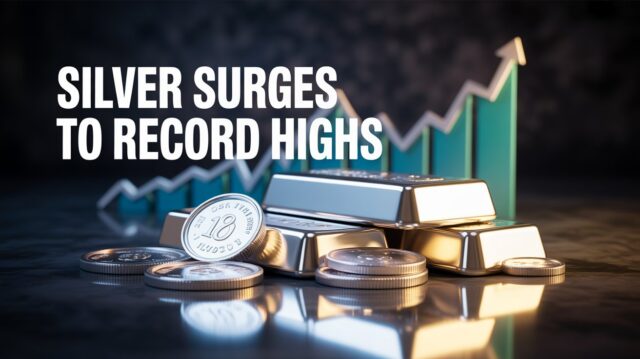Investing 100k can be a daunting task, but it doesn’t have to be. With careful planning and execution, you can use your money to reach your financial goals.
In this article, we will look at some of the key factors to consider when investing 100k. We will also provide some tips on how to choose the right investments and manage your risk. To effectively manage risk always use trusted resources like Trustpilot.
1. Your Goals
The first step in investing 100k is to define your goals. The first thing to consider when making an investment is, what you hope to achieve. Are you saving for retirement, purchasing a property, or inheritance – whatever the reason, you need to understand it and pick an investment product that will complement these goals.
Once you know your objective you can start to develop an investment strategy. Your strategy will depend on your risk tolerance, time constraints and financial goals.
2. Your Risk Tolerance
How much risk are you comfortable with? Some people are comfortable with a high level of risk, while others prefer to play it safe.
If you are risk-averse, you may want to invest in assets that are less volatile, such as bonds or CDs. If you are more comfortable with risk, you may want to invest in assets that have the potential for higher returns, such as stocks or real estate.
3. Your Time Scales
Timescales are an essential part of an investment, how long you have until you need to access your money, should be a key consideration when selecting an investment vehicle. If you need your money in the short term, you will need to choose investments that are relatively liquid. If you have less time constraints you can afford to invest in assets that are less liquid but have the potential for higher returns.
4. Your Financial Goals
What are your financial goals? Are you saving for retirement? Buying a house? Starting a business?
Your financial goals will help you to determine the right mix of investments for your portfolio. For example, if you are saving for retirement, you may want to invest in a mix of stocks, bonds, and real estate. If you are buying a house in the next few years, you may want to invest in CDs or other short-term investments.
5. Choosing the Right Investments
Once you have considered your goals, risk tolerance, and time scales, you can start to choose the right investment vehicle, type and length. There are many different types of investments available, so it is important to do your research and choose the ones that are right for you.
Some of the most common investments for 100k include:
-Stocks
Stocks are shares of ownership in a company. They can be a good way to grow your money over the long term, but they are also volatile, so they can lose value in the short term.
-Bonds
Bonds are loans that you make to a company or government. They are generally less volatile than stocks, but they also offer lower returns. One of the most profitable methods to invest in bonds is property bonds. A property bond is a loan often to a developer to finish a planning-approved project, typically property bonds have the highest payouts.
-Real estate
Real estate can be a good way to diversify your portfolio and generate income. However, it can also be illiquid and risky.
-IPO’s
Another great investment is an initial public offering. Within this investment type you investing in a company that has already filed accounts and p & l statements, the profit is then dictated by market interest. The right IPO can generate more profit in one go than investing in individual assets all year.
6. Rebalance your portfolio regularly
A vital step often overlooked is the periodic rebalancing of your investment portfolio to stay aligned with your risk appetite. Over time, market fluctuations can shift your portfolio’s risk profile. For example, assets initially deemed low-risk may gradually become high-risk, and vice versa.
As Warren Buffett wisely said, “The most important quality for an investor is temperament, not intellect.” Maintaining discipline and adjusting your portfolio periodically is crucial to ensuring it continues to meet your long-term financial goals.
To illustrate, imagine you built a portfolio consisting of 40% Shares and 60% Property Bonds. If the shares perform well and increase in value, over time your portfolio might shift to 30% Property Bonds and 70% Shares. This means a higher proportion of your assets are now in riskier investments. If your risk tolerance hasn’t changed, it would be wise to rebalance by moving some of the growth in shares back into bonds, restoring the 40:60 balance.
Mutual funds
Mutual funds are a parcel of equities (often stocks, bonds or ETFs) that are managed by a professional (normally a bank-appointed broker). They can be a good way to invest in a variety of assets without having to do the research yourself. The fund manager is often paid a commission on the fund they manage, so they have the ideal motivation to ensure its success.
Mutual funds work well for cautious investors as they condense risk by placing equity across multiple industries, countries and sectors.
ETFs
ETFs are similar to mutual funds, the only difference is they can be traded on an exchange like stocks. This makes them more liquid than mutual funds, but they can also be more volatile.
7. Managing Your Risk
No matter what investments you choose, it is essential to manage your risk. One way to do this is to diversify your portfolio. Diversification means investing in a variety of assets so that if one asset loses value, your overall portfolio will not be as affected. Products such as mutual funds will often already do this as they are already split over many different equities.
Invest Long Term
Another way to manage your risk is by investing for the long term. The stock market is volatile in the short term, but it has historically trended upwards over the long term. This means that if you invest for the long term, you are more likely to see your money grow. Again this is a strategy where you do not have immediate time restraints.
Our Conclusion
Investing £100k can feel daunting, but with a well-planned strategy, it can help you reach your financial goals. The key is to find an advisor you trust and feel comfortable with. Take your time—don’t rush into decisions. Start by testing the waters with one investment, and only reinvest once you’ve seen the capital return to your account.
I hope this article has been helpful. If you have any further questions, please do not hesitate to contact us.
If you are ready to start investing, please contact us today. We would be happy to help you develop an investment strategy and choose the right investments for your portfolio.
See also:






